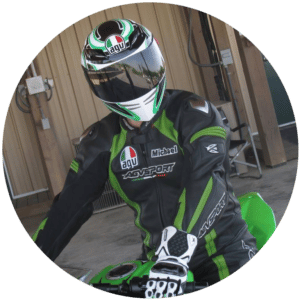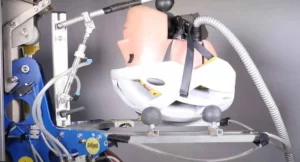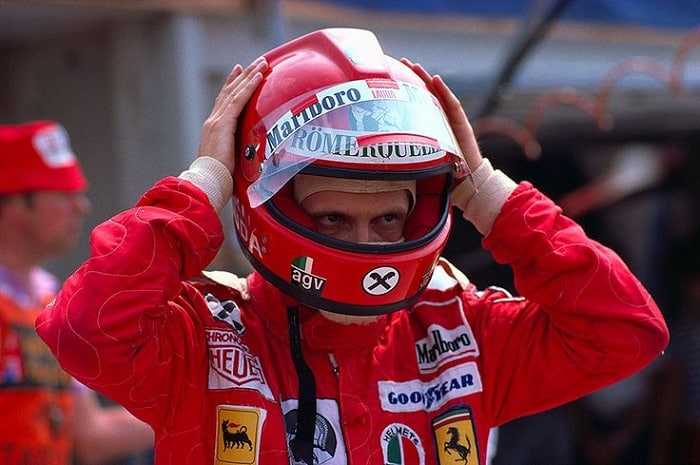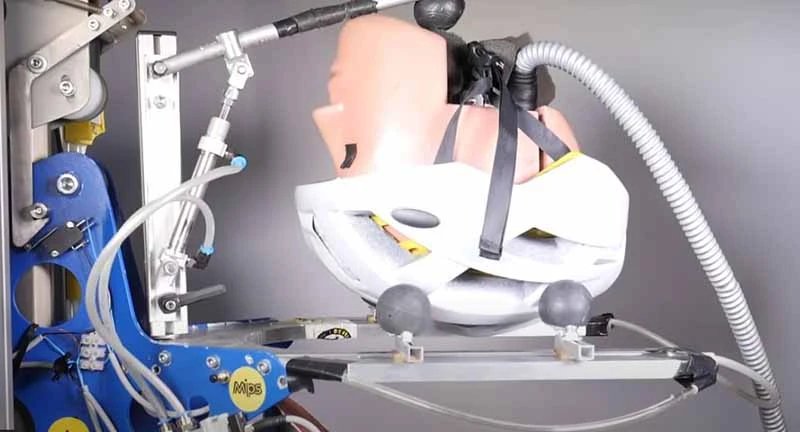Whether you’re in the middle of a roaring chase or just trying to make peace with your estranged brother, it’s important to communicate effectively. We all know someone who can’t seem to find their way around an intricate conversation, and they probably don’t have very good friends. Bikers are notoriously tight-knit, and we rely on one another for support and company. Therefore, it only makes sense that we learn how to properly signal to others from a young age. These hand signals are invaluable whether you plan on getting into competitive bike racing or simply want to stay safe on the road. Let’s take a look at some of the most common hand signals every rider should know:

12. Left turn
This is the most commonly seen hand signal, and it’s perfect for signaling that you’re about to make a left turn. If you turn your left hand toward the oncoming traffic, they’ll know you plan on going in a different direction. The best part of this sign is that it’s universal. No matter where you go or who you meet, other riders will know you’re making a left turn.
This signal is used when you want to turn left on a two-lane road. Your right hand should extend out and slightly downward. Your left hand should curl in at the wrist and grab the back of your right hand when you’re turning left; your left-hand points forward while your right hand is pointing to the right. A few different hand movements signify a left turn, and the one you choose will depend on the context of the situation. For example, if you’re turning left on a one-lane road, you can signal with just your left hand while signaling with your right hand as though you’re turning right.
11. Right Turn
If you want to communicate that you plan on making a right turn, use the same finger as you would a left turn. However, instead of moving toward the oncoming traffic, point your right hand toward the opposite side of the street you want to turn on. When a biker wants the company to turn right, they’ll usually point and extend their right hand toward another rider. If you’re alone, extend your hand and wiggle your fingers as if you’re saying, “come on over!” Right turns are easy to communicate, and most riders do it with just a stretch of their right arm out and slightly upward.
As for the right-hand signal, the same signals for a left turn can be used for a right turn. This is a simple and effective way to let other drivers know that you’re turning. Just make sure to follow all other traffic laws and keep your speed down. Another thing to remember is that some intersections have a “right turn only” sign. This means that you’re not allowed to turn right, as you’ll still want to continue straight.
10. Stop
The best way to signal someone to stop is with your hands pressed together and held up in the air. The universal hand sign for “stop” is ideal when you see a slow-moving vehicle or someone running a red light. This will let the other person or vehicle know that you would like them to come to a complete stop. First, you’ll want to signal a stop by extending your left arm out and slightly downward with your palm facing toward the ground. Next, curl your right arm in toward your side and grab the back of your left hand. This will form a “V” with your right arm parallel to your left arm. Keep your left hand at the same angle so both arms are fully extended, and your right hand should be curled in. Once you’ve stopped, put your right hand in your lap or on the steering wheel and extend your left arm out.
If someone is trying to get your attention and you don’t want to yell across traffic, use this gesture to get their attention without starting an argument. Bikers will often hold their hand up in the air and wiggle their fingers to get your attention. If you’re riding alone, extend your hand and wiggle your fingers to indicate that you’re waiting for someone.

9. Speed Up
If you want to let someone know that the current pace is going too slow, use your thumb and pointer finger to form the letter “U” and place it on your forehead. This sign is perfect for letting someone know they’re going too slow. Your right hand can then either bend at the wrist, or you can keep it straight. If you’d like to slow down, you can signal this with a similar left arm signal, but now your left arm will be slightly downward.
For example, if you’re trying to catch up to a friend who is going too slow, you can use this hand signal to let them know you want to speed things up a little. Use your other hand to point and show the other rider where you want them to go. Be careful, though; this is a tricky signal that can be easily misinterpreted.
8. Slow Down
If you want to signal someone to slow down, press your two fingers together and hold them up in the air. This universal sign for “slow down” is perfect when you want to let the other person know that they’re going too fast. Again, use your other hand to point where you want the other rider to go while simultaneously wiggling your fingers to attract their attention.
Signaling for a slow down will let other drivers know to keep their distance and be careful around you. First, extend both your hands out, fully extended. Then, bend your right hand so the thumb points down, and your pointer finger points outward. Your left hand should remain still and at a 90-degree angle. When you see a car speeding up next to you, quickly bend your right hand forward and then backward to indicate a slowdown. This is a very important safety feature; your left hand should remain still. If you are riding with a group, use this sign to let your friends know you want them to slow down.
7. Follow Me
The sign for “follow me” is as simple as it gets. Extend your index finger and wiggle it back and forth. If you’re trying to get someone’s attention and they’re not paying attention, extend your finger and wiggle it in the air to get their attention.
If you want to lead someone, you can use this hand signal. Extend your left arm out and slightly downward, and your right hand should be curled in at the wrist. Your left hand should be parallel to your right arm. If you’re riding with someone else, extend your finger and wiggle your fingers to indicate that you want them to follow you.
6. You Lead/Come
The two most common hand signals for “you lead/come” are a fist with your thumb sticking out and a clenched fist with your pinky sticking out. Both of these hand signals are perfect for indicating that you want to take the lead and go first. If you want to take the lead from the others, extend your fist and wiggle your thumb. This will let the others know to make way for you to go first.
5. Road Hazard
When you come across a dangerous situation on the road, such as a pothole, quickly extend your two middle fingers. This sign is perfect for letting the other person know that there’s a road hazard ahead. You can also use this sign to let others know that they need to slow down and make sure they don’t hit the hazard.
The right foot should be off the gas so the bike doesn’t bounce out of the turn and the rider can brake smoothly. A common road hazard is a debris on the road. You should use this hand signal if you notice that there is debris on the road that could damage your bike. Another common road hazard is a pothole, especially in the spring and fall when the ground has a lot of moisture. You should use this sign if you come across a pothole or other obstacle on the road that could damage your bike.
4. Single File
When you want to signal someone to make them ride single file, quickly extend your index fingers. This sign is perfect for signaling that you want to ride in a single file. Use your other hand to point where you want the other rider to go.
When making this hand signal, the right hand should be pointing at the bike you want to lead. The right foot should be off the gas so the bike doesn’t bounce out of the turn and the rider can brake smoothly. When riding single file, try to stay at the back of the line of bikes. This will allow you to more easily stop if there is an obstruction in front of you. If there is a bike in front of you that is using the Single File hand signal, then treat them the same way you would treat a bike that had debris in front of them.
3. Road Closed
When you see a biker hand sign that says “road closed,” this usually means that there’s either an emergency or a potential hazard on the road. Road closures can happen for a lot of reasons, from rainstorms to traffic accidents. When you see this sign, slow down and use extra caution. This may mean that there is debris on the road or a damaged bridge, and you should proceed with caution. Biker hand signs that say “road closed” should always be followed by a “you are now safely exiting”, as you may come upon a biker hand sign that says “road closed,” but your exit is fine.
2. Look Out!
If you see a biker hand sign that says “look out!” this usually means that there’s a hazard directly in front of the biker. It’s a good idea to slow down and look out for any traffic signs, as well as other bikers when you see this biker hand sign. This biker hand sign should always be followed by another biker hand sign that tells you what the hazard is so that you don’t end up having to help the rider who waved this sign. It’s a good idea to also keep an eye out for motorcycles that are using this hand sign as a way to warn other riders that they’re at the front of the group and looking out for hazards.
1. Yield to Oncoming Traffic
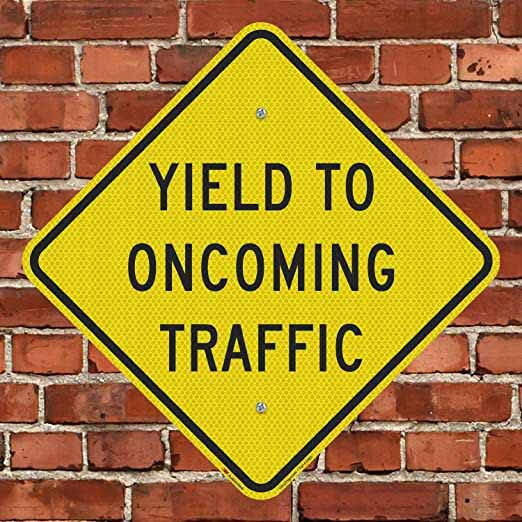
When you see a biker hand sign that says “yield to oncoming traffic,” this usually means that you should yield to oncoming traffic. This biker hand sign should be followed by another biker hand sign that tells you what the oncoming traffic is so that you don’t have to stop for a random car on the road. This biker hand sign should be used with caution and you should be especially careful when you see this sign in the middle of an unfamiliar road. You should yield to traffic that’s moving slower than you are and that has a right-of-way sign or arrow. It’s important to yield to oncoming traffic when you want to turn left or make other dangerous lane changes, like making a U-turn on a two-lane road.
Hand signals are an incredibly valuable tool in communicating with other riders, and they can even help you avoid accidents on the road. Biker hand signs are a great way to let other motorcyclists know that you’re coming their way. However, they can also be dangerous if you don’t know what they mean. Remember, a biker hand sign should be followed by another biker hand sign that tells you what the sign means. If you see a biker hand sign and aren’t sure what it means, simply slow down and proceed with caution.
M/HW


